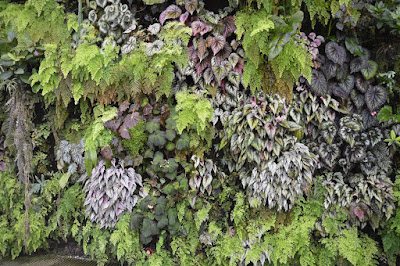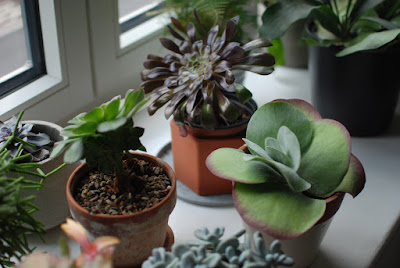The last time I was in Singapore which must have been getting on for ten years ago, Gardens by the Bay was under construction. The roads near the Marina were lined by trees in enormous containers, making you feel as if you had just driven into a garden centre or nursery that catered to giants. All were destined for one of the world's largest and most ambitious horticulture projects.
So, the first thing on
re-visiting, was to get down there and see how the project was doing.
The first impressions were very much that this was opulent public
horticulture, walking a path between well-funded amenity horticulture
and something more educational, but without any pretence at it being
a botanical garden. Spectacular constructions, such as the signature
'super trees' and huge scale plantings make a powerful impact, but
don't help define quite what the garden is for, other than impressing
the visitor. Public gardens have often had this role. In trying to
make sense of this extremely large, very well-funded and ambitious
project it helps to think back to the Victorian era.
In that golden age of
gardening, public parks were about municipal pride, and declaring the
status of the city or community that funded them. Not much chance of
that happening in today's Britain, the most centrally-controlled
country in Europe, where local government is so squeezed by the
politics of austerity that basic services are beginning to break
down. Singapore, like other successful Asian economies, are in a
similar situation to where we were in the Victorian era. With its
reputation as a garden city (an inheritance from the British Empire)
and the world's leading centre for urban greening, the use of gardens
as a national icon seems natural.
The scale and level of
control is all a bit overwhelming. The control is again, very
Victorian, and likewise dependent on cheap labour (mostly south
Indian Tamils). It is also very Chinese. Singapore is the ultimate
state run on Confucian lines. “We think of the government as being
like our parents” says a Chinese friend (and no particular fan of
her government in Beijing and in fact having deep personal reasons
for thinking quite the opposite). 'Planning' and maintaining control
have been key to the city-state's (amazing) success as an economy.
Nice tidy public gardening on a mega scale is all part and parcel of
a paternalistic state which wants its citizens to enjoy their spare
time in suitably safe and unthreatening ways. Its not somewhere where
many western liberals would like to live, but it's the only place I
have been where multi-lingual poster campaigns invite people to grass
up their employers if they face unsafe working practices.
Possibly inspired by,
or aiming to go beyond, Cornwall's Eden Project, there are two vast
'greenhouses', kept cool rather than warm, using a clever
heat-exchange system powered by decaying compost. We went into the
Mediterranean one first. Here there are some good displays based on
the various Mediterranean climate zones around the world, and good
interpretation. Trouble is, someone's been unable to stop themselves
having a go at some of the shrubs with their hedgetrimmer. There's a
terribly kitschy faux-Chinese garden, planted with loads of
forced-looking dahlias.
And then, the other
'biome'. Something completely different. Dedicated to cloud forests,
this is the most sustained, visionary, high-investment naturalistic
planting extravaganza ever. One of those things that gives one real
hope. I'm assuming most readers will know what a cloud forest is, but
for those who don't it is a mountain region that gets very high
precipitation, much of it from being in the clouds. Cloud forests are
biodiversity hotspots, often with very high rates of evolution, as
every mountain side and valley will have slightly different
conditions and the physical fragmentation of the territory allows for
isolation and evolution. Think orchids, bromeliads, vireya
rhododendrons, tropical begonias. The Gardens by the Bay Cloud Forest
biome sends its visitors up in a lift to descend on a vertiginous
series of aerial walkways around an artificial mountain covered in
plants growing practically vertically.Vertical planting has had a bit of a chequered career in the temperate zone, but here, in a cloud forest zone (real or artificial) a lot of species grow like this naturally.
The standard of
everything is just so high, the interpretation spot-on, with firm and
imaginatively-driven messages on conservation and climate change.
Given that we are entering the Chinese century, it is really
encouraging to see such conservation leadership coming from within
the Chinese language community.

















